In Chapter 13 bankruptcy, you must prepare a repayment plan for your debts. You will work with the trustee in your case to create this plan.
You must have a regular income to file this type of bankruptcy so that you have the funds to repay your creditors. According to the U.S. Courts, your plan will cover three to five years of payments and you must file it with the court within 14 days of filing for bankruptcy.
Type of creditors
As you create your plan, you will need to divide your creditors into priority levels. The top-level creditors are those whose debts you must repay in full, such as taxes or child support. The next level are secured debts, which are debts that you put up collateral to get. For example, your mortgage and car loans are secured debts. The bottom level debts are unsecured, which usually are credit cards.
You may not repay all your debts in full except the top-level priority debts. The other types of debts may only receive partial payment or none at all. You should note that secured debts not repaid in full could result in the loss of the collateral you used to secure them. If you want to keep collateral, then you must work it into your plan to repay such debts in the amount that is at least equal to the value of the collateral.
Disposable income
To figure out how much you will pay, you will need to understand your disposable income. That is the amount of money you have left after paying your regular bills and expenses. Note that if you receive child support payments, you do not include this in income figures as you will not use it to repay your debts.
